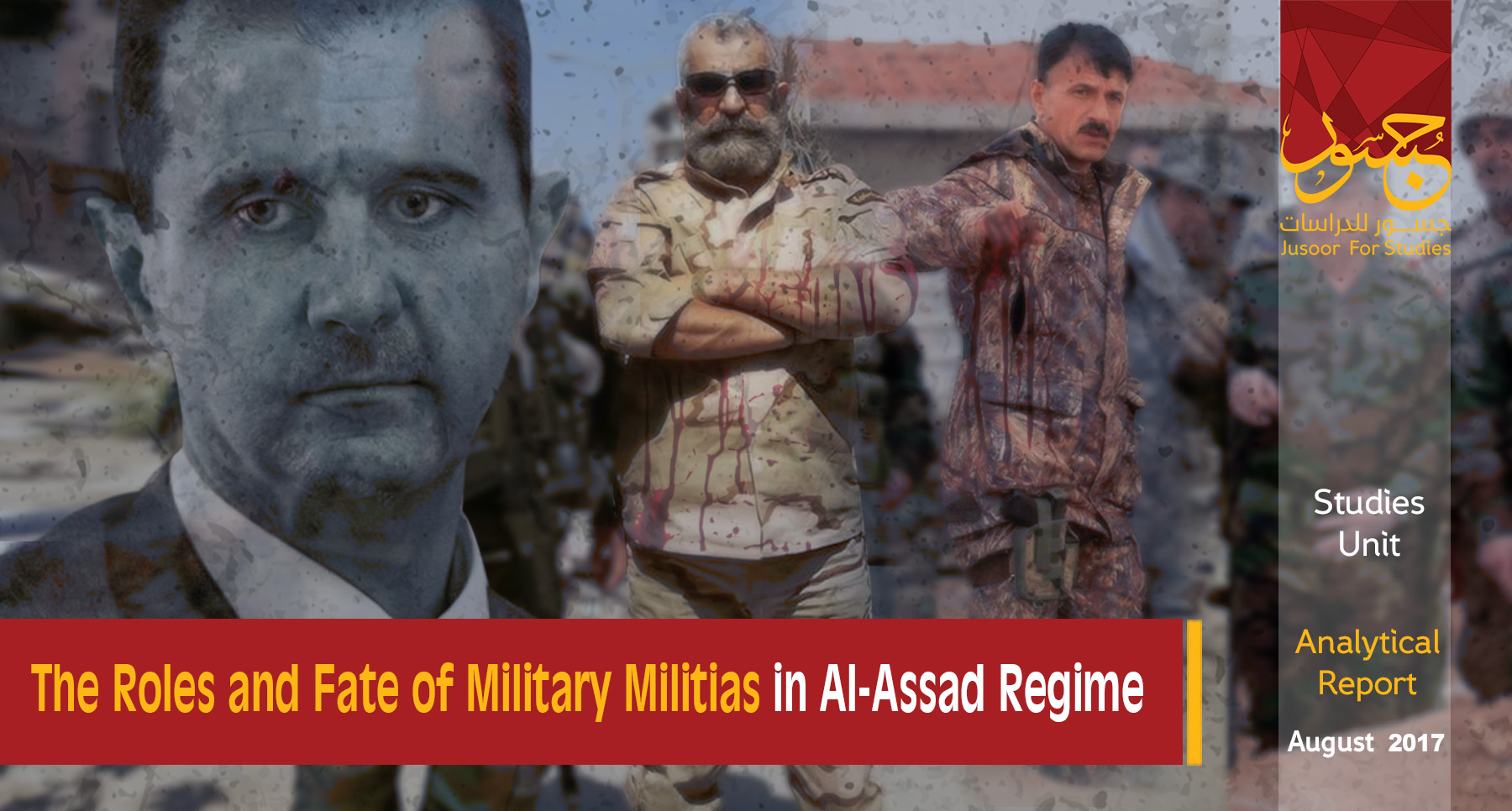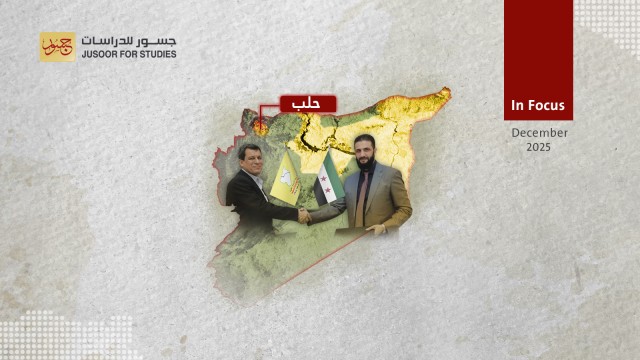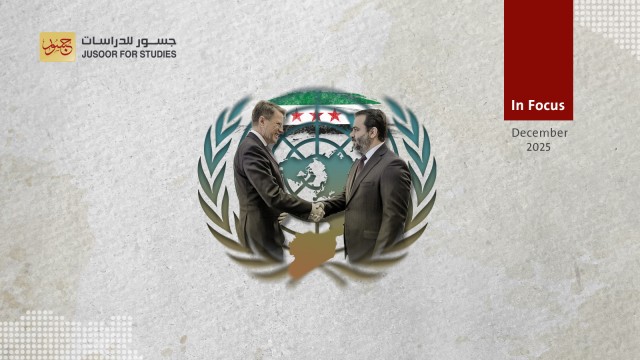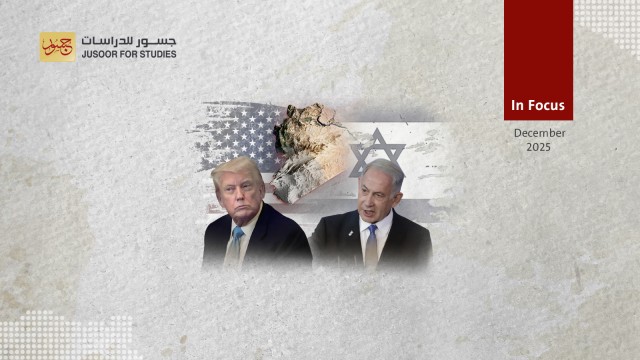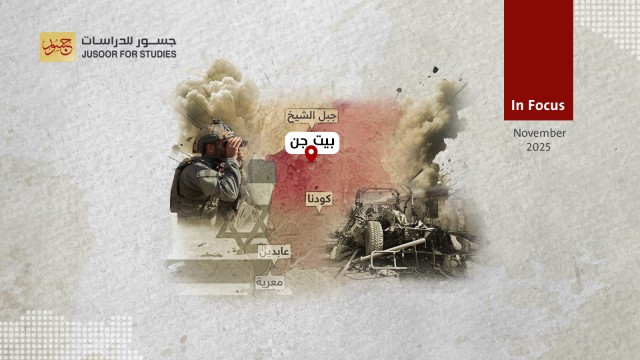The Roles and Fate of Military Militias in Al-Assad Regime
Font Size
Preface
Early of 1970s, Hafez Al-Assad regime imposed full control upon the military institution, using the army to seize the power in Syria, spreading the concept that: we used arms to seize the power, if anyone wants us to leave, they have to use arm power . Hafez Al-Assad distributed the security and military authorities on several institutions and services, leading to a huge increase in their numbers, causing an overlap and intersections in their broad authorities. The Syrian regime made sure to control all the security services' outcomes without any contact between these services, furthermore, constant conflict between the services' leaderships took place to gain the regime’s privilege.
Senior officers implemented the same scenario upon lower rank officers, as the Syrian society turned into groups of rivals, who had in mind one thing only, pleasing the Syrian regime, even if they must snitch their closest relatives, sometimes they snitched themselves to avoid being rattled by someone else.
When Bashar Al-Assad came to power in 2000, the governance mechanism remained the same, however, his skill and ability to control the model established by his father are lower and less effective, changing the dynamic of firming his father governance into a mechanism for the current regime survival, as the conflict between those powerful parties allowed the weak president to remain in his position, as none of them was able to overcome the other.
The security situation in 2011 has changed the military and security maps in Syria, obliging the Syrian regime to depend on different mechanisms to deal with the new situation, which allows the army institution to continue until this day despite the defection of thousands of officers along with the death of hundreds in addition of losing two thirds of the Syrian land, including military camps and arms. Moreover, this situation allowed the army to defend the Syrian regime even if it contributed in limited prevention of the regime’s fall with the intervention of foreign militias, which their organizational and fighting doctrine have surpassed the Syrian Army.
Dissembling the administrative system of the Syrian Army represents the most notable mechanisms, as some officers from the army turned into militias’ leaders who don’t need abiding the Syrian Army bureaucracy concerning the chain of command or even military appointment and military promotion mechanisms.
This mechanism led to the emergence of new military and security leaders after 2011, some of them are from the second and third military ranks, leading kind of independent military groups which are linked to Syrian Army institution or any security service through the militia's leader at the organizational level, as these militias recruit civilians as combatants, conducting military and security tasks simultaneously!
The resiliency of Syrian Army institution in dealing with the recent security conditions after 2011, caused a crisis for the regime and its army, as these militias became a burden for Al Assad regime, causing gaps within the regime’s foster while the militias’ leaders turned into local leaders, who expanded their ambitions and contested their higher rank military leaders instead of pleasing them.
These militias have also caused a burden for Russia’s project after the Russian intervention in Syria. Knowing that, Moscow is more influential actor than the Syrian regime.
This report tries to highlight the current and future role of military and security officers, who emerged during the crisis along with the possible scenarios to deal with them.
First: External Actors reconsider their plans
The Iranian Intervention
The announcement of targeting the crisis cell by a blast in the national security building took place mid of 2012 in Syria, causing the death of five most notable military and security leaders as unprecedented security event in the country, at which Syrian regime was in its weakest situations since 1970s till this day.
Contrary to expectations, the sudden absence of the senior officers didn’t cause a full breakdown within the Syrian regime, as the Iranian support after blasting the crisis cell enabled the persistent level of the regime with gradual but slow increase through the following years.
A rumor spread among the regime’s supporters that the officers of crisis cell were traitors as a clear sign that everything is under control by Al-Assad regime, at which the last party eliminated this cell due to the previous reason.
Assef Shawkat, the deputy Minister of Defense of Syria from September 2011 until his death in July 2012 was the most notable absentees, at which he was responsible for the cooperation with EU and USA in combating terrorism for long term, he didn’t want Iranian officers to take over decision-making process in Syria. The dead deputy minister was considered one of the most significant channels of Europe and America influence upon Bashar Al-Assad authority. Assef Shawkat was well-known of his strong personality alongside his previous disputes with Bassel Al Assad and Maher Al Assad.
Dawoud Abdallah Rajiha, the Syrian minister of defense from 2011 to July 2012 when he was assassinated, had a close relationship with Russia through his frequent visits to Moscow for arms transactions and the joint military defense between Syria and Russia that time. Before few months of the crisis cell blast, the minister of defense Ali Habib Mahmud's term ended on 8th August 2011, and he was replaced by Dawoud Rajiha in the post, as Ali used to have a substantial Russian support.
Hasan Turkmani, the former minister of defense and head of the crisis cell was also assassinated in the blast, Turkmani had a close relationship with Turkey, as he had Turkish origins. Bashar Al Assad appointed him in that post due to the improvement in the ties between Syria and Turkey that time.
Hisham Ikhtiyar and Hafez Makhlouf were also assassinated in the cell blast, the two figures used to have a great influence since Hafez al-Assad presidency.
The weak character of Bashar al Assad along with his substantial dependence on Iran since 2005, shocked the crisis cell officials, who had plans to get rid of the demonstrations in Syria without any help from foreign parties, as they used to have reciprocal relations with Iran and Russia. Therefore, Iran was obliged to get rid of those officers in order to guarantee full control over Damascus and its regime, which was obvious after the crisis cell blast, as Tehran rearranged the security circle with figures that have close ties with Iran, keeping former personalities who also have strong ties with Iran like: Jamil Hassan, the current head of the Syrian Air Force Intelligence Directorate and a close adviser to President Bashar al-Assad - Mohammed Dib Zaitoun: the current head of the Syrian General Security Directorate and a close adviser of Syrian President Bashar al-Assad – Ali Mamlouk, the current head of the National Security Bureau instead of Hisham Ikhtiyar. Moreover, Abdel-Fatah Qudsiyeh was transitioned from being head of the Air Force Intelligence Directorate to the deputy director of the National Security Bureau. Ali Younes, head of the Intelligence division for a short period was replaced with the major general Mohammed Shihadeh, as the last party is Shiite and has close ties with Iran. Fahd Jassem al-Freij is the current Minister of Defense, as he descends from a family in Deir ez-Zor that Maher al-Assad became their son in law.
These events show that Iranians have fully controlled Bashar al-Assad through granting all critical positions in Al Assad regime to officers (Jamil Hassan – Deeb Zaytouna – Ali Mamlouk) who have close ties with Iran. After the crisis cell blast, Iranian Revolutionary Guard (IRGC) officers become the commanding officers, planners, and de facto administrators for all Syrian Army sectors.
Russia Enters the Syrian Scene
After the Russian intervention in Syria, Moscow didn’t change the above-mentioned security officers, focusing on the Syrian Army sectors, as the changes took place to guarantee the Syrian Army loyalty to Russia by partially isolating the Army from its security commands along with the direct communication between the military divisions’ leaders and Russians thus, the security hierarchy has been skipped.
Russia focuses on the Military Security Service as a new platform to control the army and society, as this service has restored its usual structure and authorities before the Iranian intervention, it’s worth mentioning that, most officers of this service conduct staff course in Russia, at which the Military Security Service is related to Russia and the previous Soviet Union influence.
Iranians in return, expanded the influence of Air Force Intelligence on the account of the Military Security Service after the beginning of Iranian intervention in Syria, however, the service is operating at a high level after the Russian intervention, as it conducts qualitative tasks like monitoring the Russian-supported militias’ acts.
Russians have made changes in the Syrian Army structure, at which fourth, fifth, and sixth legions were established by Moscow, assigning officers who have loyalty to Russia to lead these legions apart from Iran and its militias. Moreover, these legions are commanding substantial battalions and brigades in the Syrian Army.
It’s obvious that, Syrian regime is fully controlled by Russia through loyal officers, direct leaders, or consultants from Russian intelligence and the republican palace.
Second: Militias’ Officers
Many officers have emerged after quitting their brigades or services due to the changes by Syrian regime and Iran. These officers started to work almost independently, keeping a close relation with one of the three major officers who have considerable loyalty to Iran.
After a while, some these officers turned into heroes within the Syrian regime foster, as Al Assad regime created these local icons in order to bolster the morale of its supporters in the absence of strong political and official command for the Syrian Army.
Some of these officers ran their own media campaigns by publishing their photos and videos on the front lines or among the enemy bodies, as The Major General Issam Zahreddine published a photo of him with decimated and hanged bodies on 17/5/2016. They made sure to attend social occasions in their places of origins to give speech or listening to poems that glorifies them!
In this part, we will show the most notable officers with the most presence in the media. While other officers are well-known in their regions, brigades, or security services.
A. The Major General Issam Zahreddine
Druze from As-Suwayda Governorate, serves since Hafez al Assad presidency till now. Most of his military service is in 105th Brigade which is related to the Republican Guard.
He started to emerge after 2011, as video showes him urging elements of the Republican Guard to shoot protesters directly, other recordings show him in Damascus and its rural break-ins. Zahreddine disappeared from the military scene till the announcement of appointing him as leader of military operations in Deir ez-Zor by Syrian regime, at which websites of Al Assad supporters gave Zahreddine “The Lion’s Heart” title.
Despite the presence of various military formations of Al Assad regime in Deir ez-Zor, the media of the Syrian regime considers Zahreddine as the de facto military leader for operations there.
Zahreddine as the highest Druze personality in the Syrian regime, turned into local icon among Druze who support Bashar al Assad, the major general enhanced this image in As-Suwayda through organizing what looks like Al Assad support festivals, which used to take place only for the president in order to link his image with the Druze community dignitaries.
The possible scenarios of Deir ez-Zor Battle will affect the situation of Zahreddine in the final equation, assuming that, Syrian regime is able to gain international compliance to participate in Deir ez-Zor Battle, Zahreddine the leader of Syrian regime forces there to become “national icon” after winning one of the most significant battles for Syrian regime at political and informational levels.
B. The Major General Suheil Al Hasan
A well-known officer especially after the Iranian intervention in Syria and the expansion in the Air Force Intelligence that Suheil Al Hasan is affiliated to. The major general's groups receive all kinds of volunteers including fugitives and wanted criminals by rearranging their situations and giving them high salaries, Suheil Al Hasan group was given critical tasks between 2013 and 2014 most notable advancing in Hama rural, seizing Khanasr route, and entering Aleppo city.
His reputation started to spread through the regime’s official and unofficial media, giving him “The Tiger” title. He makes sure to bring journalists of regime’s media in his battles, conducting interviews with complex sentences which have philosophical dimension, as these weak sentences turned into funny materials by Syrians.
Mid-summer 2014, Robert Fisk, a close British Journalist to Al Assad regime published news material about the major general, as he described Al Hasan as Bashar al-Assad’s favorite soldier .
Suheil Al Hasan was able to gain broad support, as some of them nominate “the tiger” to become the next Syrian president instead of Bashar al-Assad, the major general played the role of savior and hero for his supporters in all meetings he had. Rumors had it of being killed after the loss of Idlib Battle in summer of 2015, however, he had interviews with different appearance to debunk this rumor.
The influence of Suheil Al Hasan is related to Iran, as he works under the command of Iranian Revolutionary Guard officers, allowing his group to fight alongside Iraqi and Lebanese militias.
C. Simon Al Wakeel
He is the head of National Defense Militia in Mahardah. Simon has orthodoxy’s origins. Al Wakeel became the military leader in Hama rural after establishing the fourth legion by Russia, regime media presented him as a significant and loyal Christian leader in the region. Russians grant Simon broad authorities in recruiting Christians from Hama rural along with Mahardah locals, Simon introduced number of Russian officers to the Mahardah city council, at which they spoke to the locals directly for the sake of assuring them in addition to inviting them to join the fourth legion or the National Defense Militia in Maharda.
Al Wakeel is considered a local platform for the Russian command in Hama rural which is fully controlled by Russia.
D. Mohammed Al Jaber
Leader of Suqur al-Sahara militia, his brother is responsible for the field command in this militia. Protecting oil pipelines and facilities in addition of restoring them are the main objectives of Suqur al-Sahara militia, as it contains about 10000 combatants with relatively high salaries. It’s worth mentioning that, Al Jaber is involved in oil commitments in Syria.
Al Jaber loyalty toward the Syrian regime varies, as he changed his allegiance quickly from Tehran to Moscow after the Russian intervention in Syria. Fighting actions along with the security tasks of Suqur al-Sahara militia in Lattakia Governorate are being supervised by Russian command in Khmeimim Air Base.
Many positions of militias’ disobedience and overriding commands toward Bashar Al Assad relatives took place, it’s possible that Suqur al-Sahara militia eliminates small groups that Bashar Al Assad relatives created many of them in Lattakia, as problems are caused by these groups in the city.
E. Jaber Al Dergham
Leader of self-protection militia in Tartus, as Russians established this militia after Russia intervention in Syria, He is considered the most influential personality in the city, and his business is being run away from media, Dergham has strong economic ties with Russians before 2011. He plays a vital role in the process of Al Sahhabat militia withdrawal which is led by Ali Mhanna, at which the last party failed to gain any Russian dependency.
Third: The Possible Scenarios of Dealing with The Militias’ Leaders
The past seven years allowed army and security services' leaders in general along with leaders of army militias in particular to deregulate institutions imposed by Syrian Army bureaucracy, making use of the substantial resources in addition to granting them the ability to coordinate directly with foreign actors like Iran and Russia, as this choice wasn’t available before 2011.
It must be stressed that, deregulation doesn’t mean that Syrian Army is governmental institution that follows the universally recognized military systems of the rest world armies, however, it means the military systems recognized by the Syrian regime Army only, at which the gains used to distributed on chain of officers while this chain has been broken after the presence of military militias, furthermore, the authority of communicating with foreign countries by the high close circle from the regime, which forbade any officer out of this circle to communicate or even arrange for independent meetings, is over.
During the past years, the image of a hero "of some militias leaders" is drawn in the supporters’ minds through first party security and military operations on the front lines, holding weapons by themselves and risking their own lives contrary to other political and military leaders, who stay in their offices without checking the fronts even once.
This image grants them the right to influence the form of the acceptable solution along with the existence in the decision-making circle. Other officers will consider these leaders who have no legitimate presence in the field as an imminent danger.
Some possible scenarios of dealing with the officers and their militias are as the following:
1) Getting rid of the leaders and integrating the militias
Most of these militias are related to the so-called “flanking forces”, as their elements have the right to volunteer in the army after ending the war in Syria. This scenario might be implemented on Suheil Al Hasan and Issam Zahreddine groups because these militias’ elements consider themselves already serving in the army.
The most notable obstacles that hinder this scenario is the elements lack of discipline concerning the rules of a classical army alongside the inability of being committed to the army's limited salaries after years of stealing and bullying the civilians in the checkpoints in addition to breaking in their shops and homes.
Militias in Mahardah, Syrian coast, or Damascus carried their weapons to avoid joining this classical army with the fact of losing their relatively high salaries, hence, it's very difficult to convince these elements to join the classical army after the end of war, the thing that may lead to many problems.
In case of integrating all militias with the army, elements of these militias who reject this integration will return to civil life, as the leaderships of the militias must abide the laws of the army institution, making use of the field experience in order to gain military promotions and economic privileges.
In this scenario, the militias' leaders who disobey the army institution or even reject the Syrian regime orders in their local communities may be sacrificed as war criminals during any transitional justice project from international party that aims to settle the Syrian crisis.
This scenario may be chosen by Russia after ending the war for the sake of political settlement.
2) Keeping the MIlitias
These militias were established within local environments with sectarian nature, which make them hostile to the neighboring environments. The influence of Iran and Russia can be guaranteed through these militias for a long term, the thing that makes these militias like a bone in the throat of other parties including the army institution and security services in addition to hindering any upcoming settlement. While changing the terms of the agreement even relatively, allows these militias to play many roles that can't be conducted by the army due to political reasons.
In return, these militias need constant and considerable funding along with strict administration from the State to prevent any unrests in their regions, as elements of these militias were gathered randomly within one community alongside the criminals and ex-cons. Till this moment, there are no regulations or rules that define the form of the relations between these militias.
3) Various and Numerous options
This scenario can be the closest to happen, as all parties can maneuver. The periodic estimations of the military situation in each region may be considered, at which Iran to dissolve certain percentages of its militias, keeping a reasonable number that can be controlled to serve Tehran needs. Russia may do the same with the possibility of summoning additional elements if needed.
As for the groups within the Syrian Army, most of their elements to be integrated with the army for the sake of forming a professional army in parallel with demobilization of recruiters and reservists, the thing that obliges the army to declare its need for new volunteers for the sake of including elements from these militias especially after the substantial losses in the regime's army. Eventually, professional army may be established under the control and supervision of Russia.
Margins:
1- According to Der Spiegel news magazine: Mustafa Tlas, the former Syrian Defense Minister stated:” we used arms to seize the power, if anyone wants us to leave, they have to use arm power” look:
Susanne Koelbl, A 101 Course in Mideast Dictatorships, Spiegel, 21/2/2005

